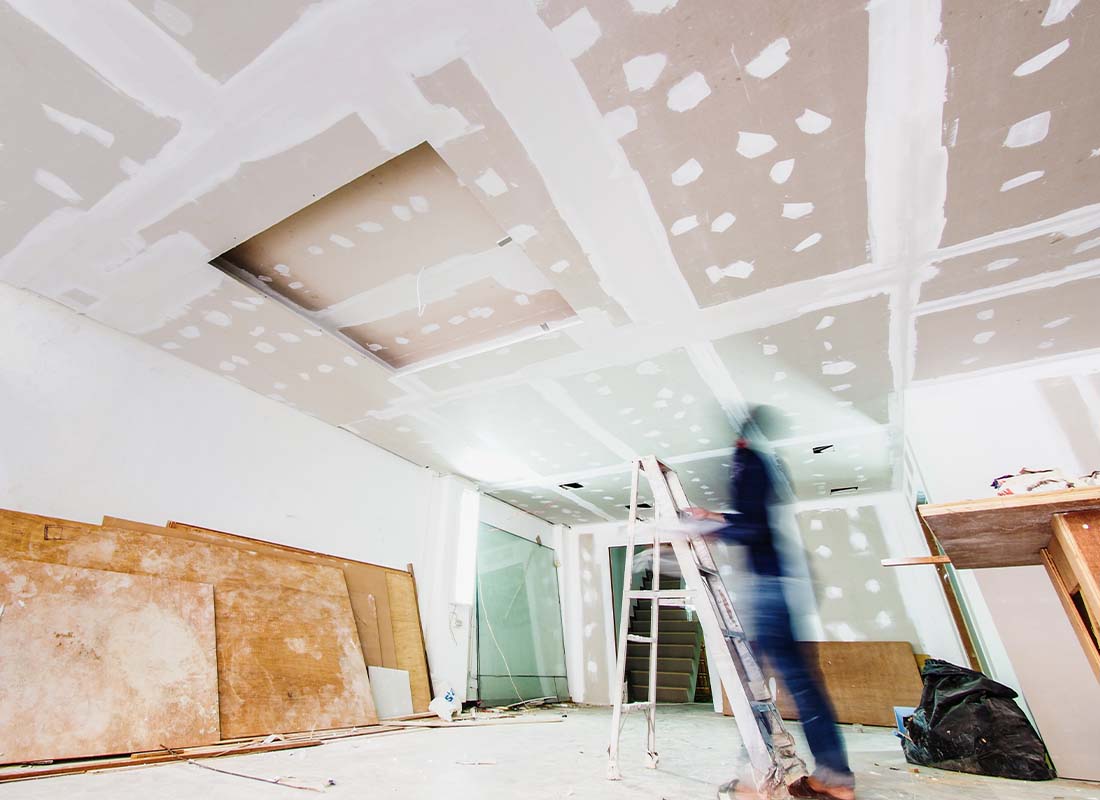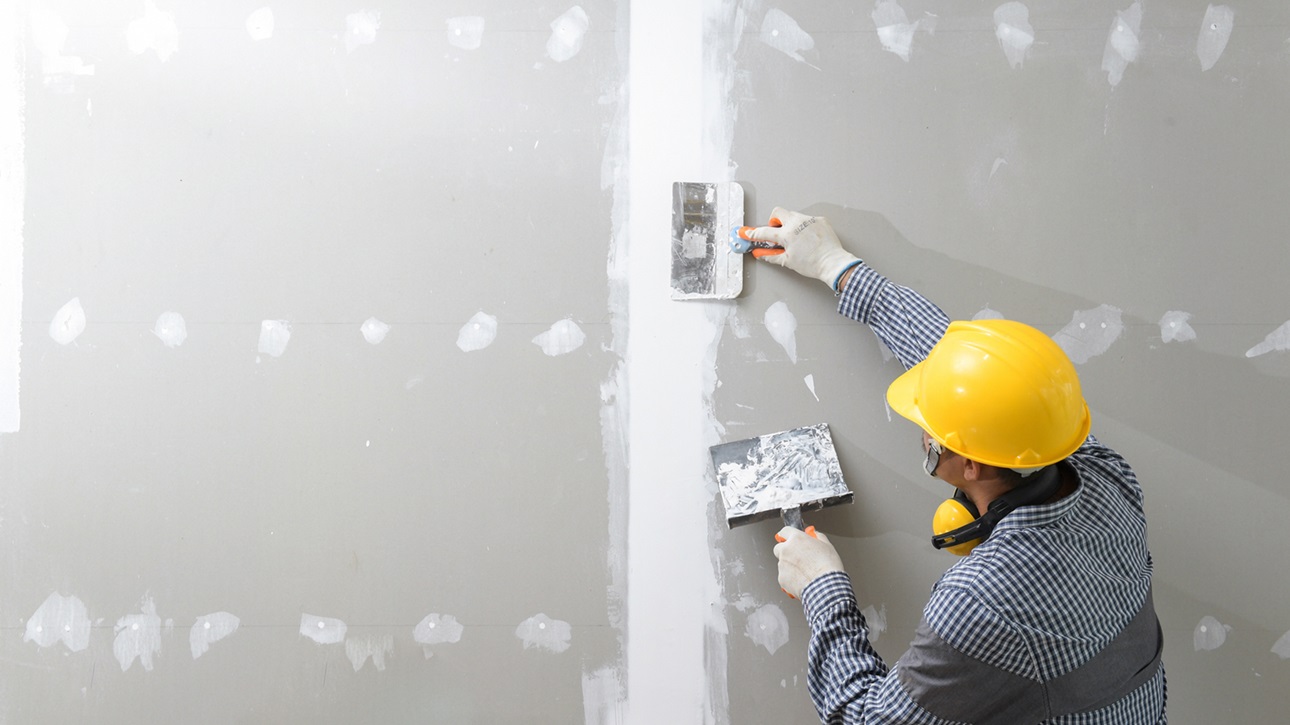Premier Drywall Fort Worth Services for Residential Projects
Premier Drywall Fort Worth Services for Residential Projects
Blog Article
Drywall Installment Facilitated: Tips for Perfect Outcomes
Drywall setup is commonly viewed as an overwhelming job, yet with the ideal method and understanding, it can become a manageable undertaking. Picking high quality materials and preparing the installation location are vital very first steps that establish the structure for success. Additionally, mastering strategies for reducing, hanging, and ending up drywall can dramatically affect the outcome. As we explore these essential pointers, you may locate that even the smallest modifications in your method can bring about incredibly improved outcomes, leaving you to consider exactly how these practices can change your next job.
Picking the Right Materials
Choosing the appropriate materials for drywall installment is crucial to accomplishing a long lasting and aesthetically pleasing coating. drywall contractor. The primary element, drywall sheets, usually come in various densities, with 1/2-inch sheets being standard for interior wall surfaces. For locations calling for additional wetness resistance, such as kitchens or restrooms, take into consideration using eco-friendly board or concrete board, which are particularly made to withstand humidity

In addition, picking the right bolts-- either nails or screws-- is crucial for safeguarding the drywall to the framework. Drywall screws are usually preferred for their holding power and minimized danger of popping. Finally, think about the finishing touches such as primer and paint, which not just boost the look however also protect the drywall from dampness and wear.
Preparing the Setup Area
Prior to starting the drywall setup process, it is important to prepare the installment area thoroughly. This prep work includes several critical actions to make sure a effective and smooth job. First, clear the location of any type of furniture, devices, or obstructions that could prevent gain access to. A clean workspace decreases the danger of damages to existing products and allows for effective movement throughout installation.
Following, examine the wall surfaces and ceiling for any flaws, such as cracks, holes, or mold and mildew. Address these issues in advance; spot any damages and permit sufficient time for repair services to completely dry. Additionally, make sure that electric outlets, switches, and plumbing are effectively placed and accounted for, as this will certainly influence drywall placement.
Take into consideration the ecological problems. A stable temperature and humidity level are vital for optimal adhesion and performance of the drywall materials. Utilize a dehumidifier or heating unit to produce appropriate conditions. if required.
Cutting and Hanging Drywall
The key to efficient drywall installation exists in the specific cutting and dangling of the panels. Begin by gauging the area precisely, taking into account any obstructions such as electric outlets or windows. Utilize a straight edge and an utility blade to rack up the drywall along your measurements, then break it along the racked up line for a tidy break. For more intricate cuts, such as around electrical outlets, a drywall saw can be made use of for accuracy.

Constantly work from the top down and entrusted to right, guaranteeing that you keep a staggered pattern to improve security. Correctly hanging the drywall establishes the foundation for a smooth surface, ultimately causing superior results in your drywall task.
Taping and Mudding Methods
While correct cutting and hanging of drywall establishes the phase, the next critical step includes understanding taping and mudding techniques to make sure a smooth finish. Taping is crucial for reinforcing joints and stopping splits; it involves embedding tape right into the used joint compound (mud) Start with a high quality fiberglass or paper tape, using the tape over the joint and pushing it into the wet mud utilizing a taping blade, making certain no air bubbles remain.
Once the tape is in location, use a slim layer of joint substance over the tape, feathering the edges to create a smooth shift to the drywall surface. Enable this layer to completely dry entirely prior to sanding it gently to remove imperfections. Repeat this process, applying extra coats of mud as needed-- commonly a couple of layers-- while gradually widening the application area with each layer to achieve a seamless look.
After news the final layer dries out, sand the surface area with a fine-grit sandpaper up until smooth. drywall contractor. Remember to wear a mask during fining sand to stay clear of breathing in dirt fragments. Understanding these taping and mudding strategies is important for attaining a professional-quality coating in your drywall setup
Completing Touches for Perfection
Achieving a flawless drywall installment surpasses mudding and taping; it culminates in the finishing touches that elevate the overall look. These last steps are essential in ensuring a professional-grade finish that boosts the appearances of your room.
Begin by sanding the dried joint compound to create a smooth surface area. drywall fort worth. After sanding, clean down the walls with a wet fabric to get rid of any type of dirt bits, ensuring a tidy surface for paint.
Following, apply a guide specifically made for drywall. This step is crucial, as it assists secure the joint compound and supplies an uniform base for the topcoat. As soon as the primer dries out, inspect for any type of blemishes, and click this link touch up as required.
Conclusion
In final thought, effective drywall installation rests on the mindful selection of products, thorough prep work of the installment area, and accurate implementation of cutting and hanging methods. Proficiency of taping and mudding procedures is vital for attaining a smooth finish. Additionally, interest to ending up touches, including priming and touch-ups, guarantees a professional-grade outcome. By sticking to these standards, the quality of workmanship can be substantially boosted, contributing to the overall aesthetic and performance of the area.
Drywall setup is commonly viewed as an overwhelming job, yet with the appropriate approach and knowledge, it can become a convenient undertaking.Picking the ideal products for drywall installment is vital to attaining a long lasting and visually pleasing surface.Before beginning the drywall installation procedure, it is necessary to prepare the installment area thoroughly. Mastering these taping and mudding strategies is essential for attaining a professional-quality surface in your drywall setup.
In conclusion, effective drywall installment hinges on the careful option of products, extensive preparation More Bonuses of the installment location, and accurate execution of reducing and hanging methods.
Report this page